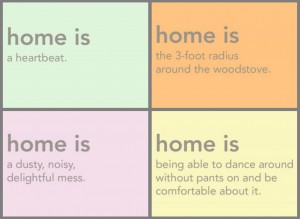Write a blog that hyper-links your research on the characters in GGRW.
I was assigned pages 217-229.
 This is an image of Buffalo Bill (middle-left) posing with the crew for the Wild West Show
This is an image of Buffalo Bill (middle-left) posing with the crew for the Wild West Show
Westerns
Westerns are a common theme within this section of the book. Either one of the characters is reading a Western (such as Eli) or watching a Western on TV (Charlie, Babo, Bursum, and Dr. Hovaugh). On page 217, King writes, “Charlie lifted the remote control and turned the sound on. The Indians were running their horses back and forth along the riverbank. On the other side, John Wayne and Richard Widmark waited behind a makeshift barricade of logs and saddles” (King 217). John Wayne, as many people might know, is one of the most famous Hollywood Western actors, usually cast as the protagonist who fights against the antagonists, the Native Americans. I had never heard of Richard Widmark, however, and decided to do some research about what film King might be referring to. Interestingly, once I did my research, I found out that the only movie that John Wayne and Richard Widmark starred in together was called, The Alamo, that was based on the Texas Revolution and the Battle of The Alamo (The Alamo n.p.). Even more interestingly, the battle was fought between the Texans and the Mexicans – in no article that I read was there mention of any Native Americans.
It is really interesting that King includes these two actors as being in the same Western movie together, fighting against the Native Americans, especially since the only movie that Widmark and Wayne did together was a movie about fighting Mexicans. After reading the section I was assigned over again, I noticed that on page 222, Dr. Hovaugh is also watching the same movie. He thinks to himself, “the horse must be an Arabian… and the chief must be an Indian” (King 222). King goes on to write that Dr. Hovaugh, “knew that Hollywood used Italians and Mexicans to play Indian roles” (King 222). King is pointing to the fact that Hollywood would often hire non-Indigenous peoples to play Indigenous roles within Westerns. Is it possible that he is also alluding to the possibility that Native Americans were hired in Hollywood films to play Mexicans?
With Eli, since he is staying at his mother’s house in a remote area, he does not have access to electricity. He passes time reading books that Clifford Sifton gave to him. On page 218, “Chapter twenty-six. Iron Eyes attacked the soldiers. The cavalry came riding over the hill” (King 218). Not coincidently, the name of main character in the book Eli is reading is the same name that Charlie’s father changed his name to, except that the long version of his name was Iron Eyes Screeching Eagle (Flick 153). Also, I believe that King is also referring to Iron Eyes Cody, a very popular Native American within mainstream media and advertising. Flick notes, that this reference is “one of many jokes about the image of the Indian in popular culture” (153). King subtly makes the assertion that – especially in pop culture – that Native Americans are all portrayed the same, hence why he gives both the character in the book and Charlie’s father the same name as the very popular Native American, Iron Eyes Cody. Eli, after reading this passage (noted above), skips over a bunch of pages and then “tosse[s] the book on the table, roll[s] … on his side against the cushions, and [goes] to sleep” (King 218). King is suggesting that it is this stereotype of Indigenous peoples – continuously used in popular culture – that is boring and predictable.
Bursum also watches the Western on The Map. He cheers for John Wayne when he exclaims “Hooray! We got ’em now, boys!” (King 219). Flick notes that Bursum’s character is based off of William F. Cody (stage name – Buffalo Bill), who was an “exploiter of Indians for entertainment in Buffalo Bill Cody’s Wild West Show” (148). This could be a commentary on Bursum’s exploitative nature and also the exploitation of Native Americans in Hollywood film in general.
Overall, I am surprised in how many connections I could find in that little section and how deep the meanings of those connections could get. I really enjoyed the novel, as stated in another blog post, I have read it before but every time I read it I learn something new or noticed something I didn’t before.
Works Cited
“Buffalo Bill’s Wild West, 1890.” Vuillemenot. Montabone. Photograph. Wikipedia. http://en.wikipedia.org/wiki/Buffalo_Bill#/media/File:Buffalo_Bills_Wild_West_Show,_1890.jpg
Flick, Jane. “Reading Notes for Thomas King’s Green Grass, Running Water.” Canadian Literature, 1999. 140-172. http://canlit.ca/pdfs/articles/canlit161-162-Reading(Flick).pdf
King, Thomas. Green Grass, Running Water. Boston: Houghton Mifflin, 1993. Print.
“The Alamo.” Remember The Alamo. Retrieved 16 March 2015: http://thealamo.org/history/the-1836-battle/index.html








